Mexico City is the largest city in the Western Hemisphere, making it the cultural capital of Latin America. It’s a must-see destination with inspiring art, enchanting architecture, and to-die-for dining experiences. In this guide, you’ll find recommendations on the must-see spots, where to stay, when to go, and valuable information to help you plan your trip to CDMX.
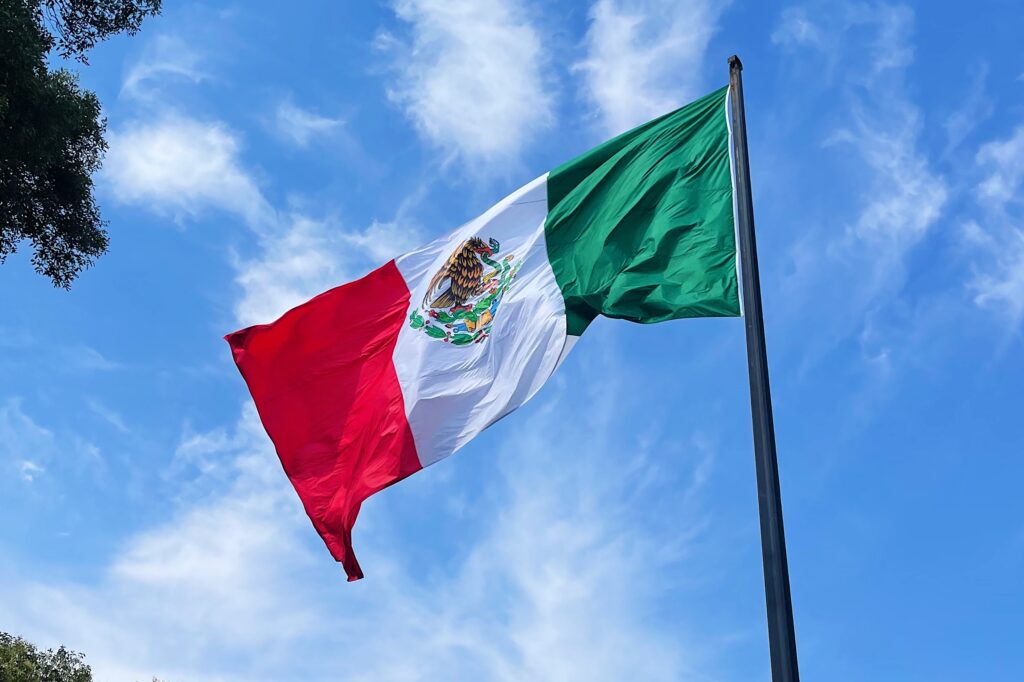
The Hitlist
A list of the must-see and must-do experiences in Mexico City.
Visit the Zócalo
Mexico City’s larger-than-life Zócalo is the Plaza de la Constitución. It’s the largest public square in Latin America, bordered by ornate government buildings including the palace and city hall. At its center is a giant Mexican flag flying proudly over the city.
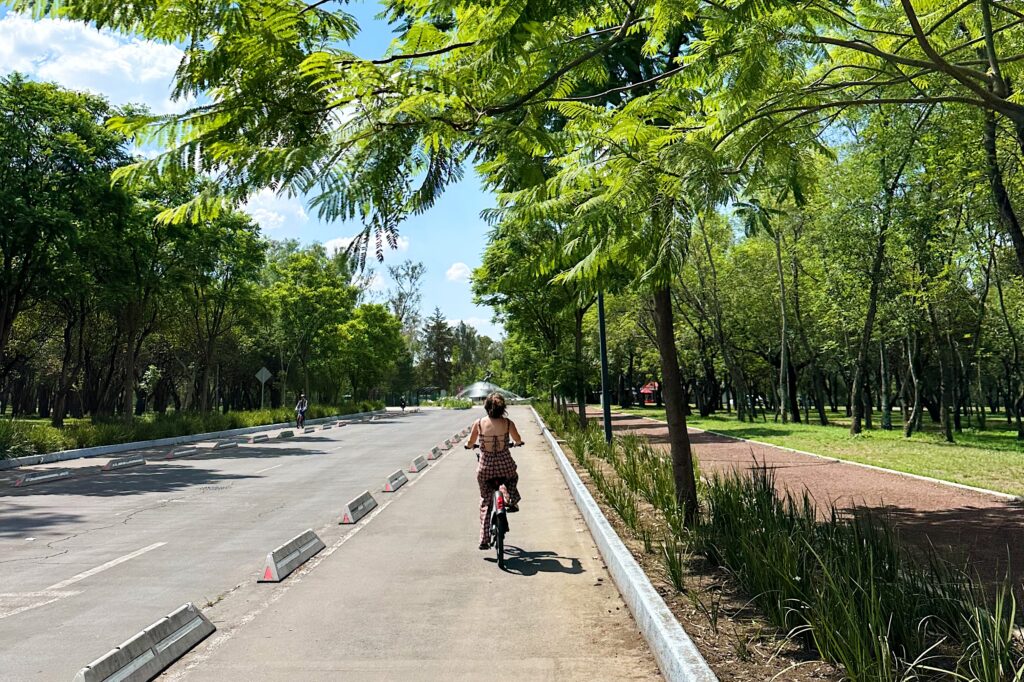
Explore the Bosque de Chapultepec
Bosque de Chapultepec (just Chapultepec for short) is a giant green space in Mexico City. (It’s more than twice the size of Central Park!) Chapultepec houses Chapultepec Castle, the National Museum of Anthropology, Chapultepec Zoo, and many more attractions. To get the most out of your time in the park, rent a bike to get around more efficiently.
Marvel at the Palacio de Bellas Artes
Palacio de Bellas Artes is a stunning art nouveau building that houses the iconic murals of famous Mexican muralists like Diego Rivera, among others. It also has rotating modern art exhibitions and acts as a performing arts space.
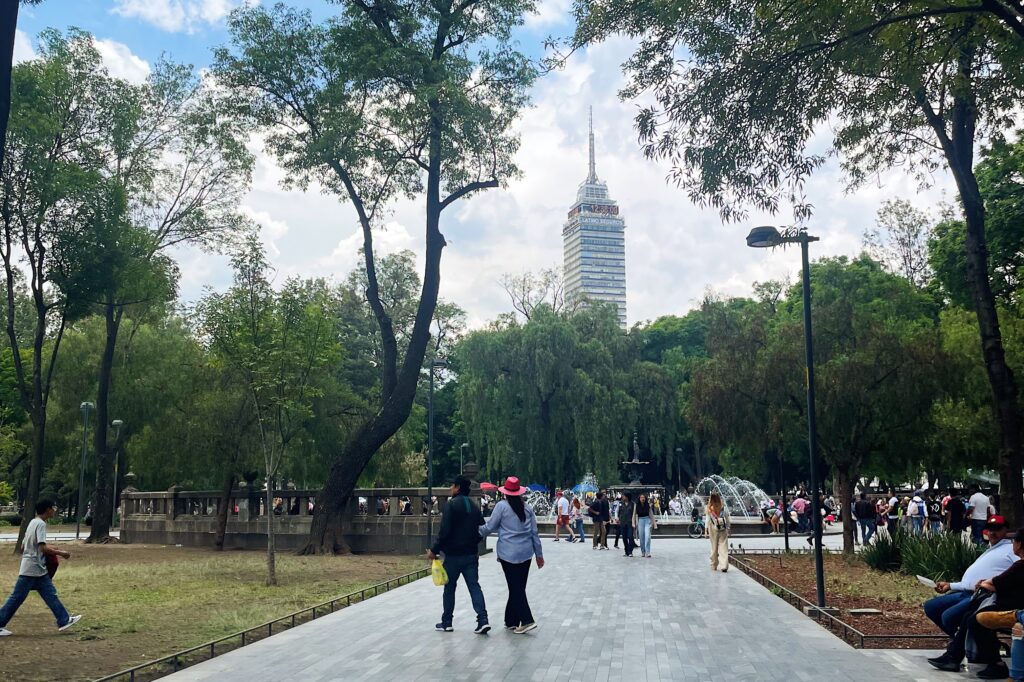
Relax at Alameda Central
Alameda Central is the park next to the Palacio de Bellas Artes that acts as a respite from the busy streets in downtown. On the weekend, you’ll find a market with street vendors and there’s always a great view of the Torre Latinoamericana.
Walk the Paseo de la Reforma
Paseo de la Reforma is the main artery that runs through the heart of Mexico City. Here you’ll find the golden Angel of Independence perched above the city. Walk along the street to spot El Ángel and follow the Paseo down to Chapultepec.
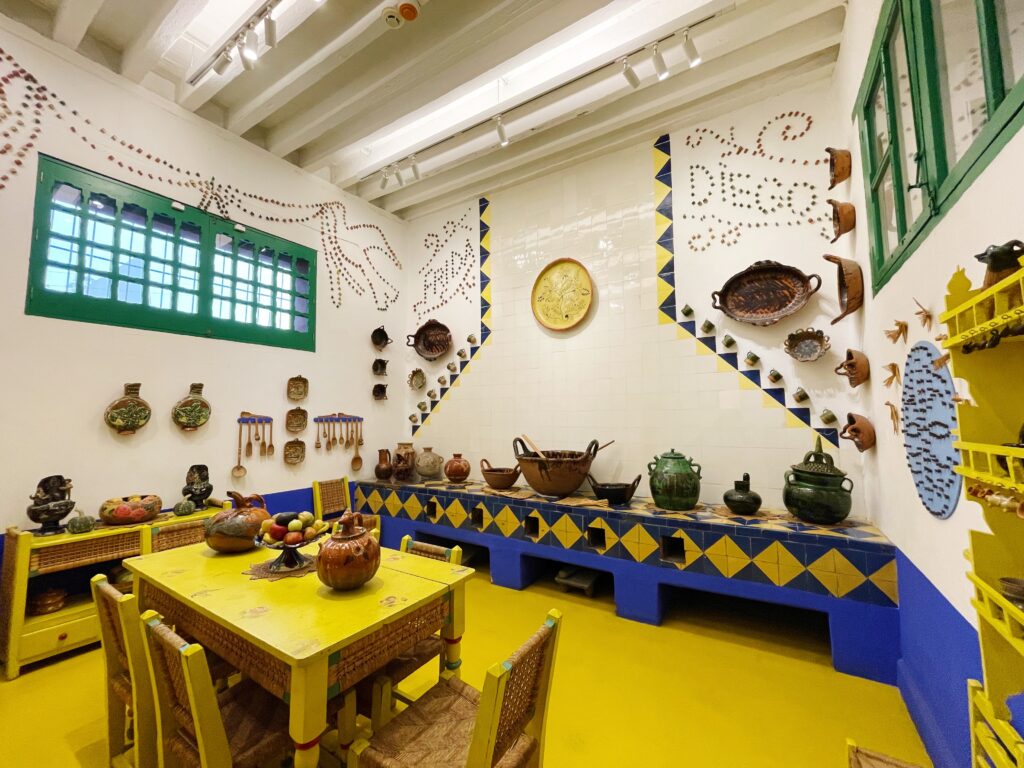
Get to Know Frida Kahlo at Casa Azul
Frida Kahlo is arguably the most famous Mexican artist. You can visit her home, Casa Azul which has been transformed into Museo Frida Kahlo. It’s a small yet comprehensive museum that goes beyond Kahlo’s art and takes you deep into her personal life. Make sure to buy your tickets at least a week ahead of time as they sell out quickly.
Shop at Mexican Markets
Check out Mercado Coyoacán, Mercado de San Juan, and the ultimate La Ciudadela for souvenirs made by artisans from all over Mexico. If you’re looking to bring home Mexican ingredients like tamarindo or piloncillo, head to Mercado Medellin in Roma or Mercado de Xochimilco.
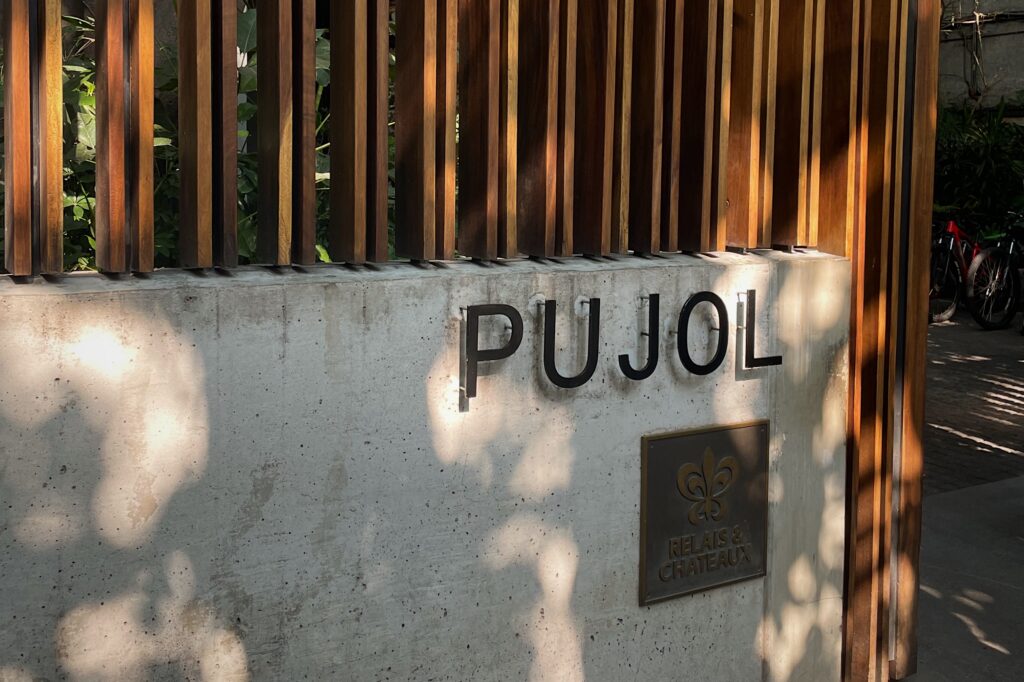
Eat at World-Class Restaurants
From fine-dining restaurants to savory street food, Mexico City has some of the best dining experiences in the world. It’s home to Quintonil and Pujol, which are #9 and #13 (respectively) on the World’s 50 Best Restaurants list. Make sure to snag reservations at least 30 days in advance.
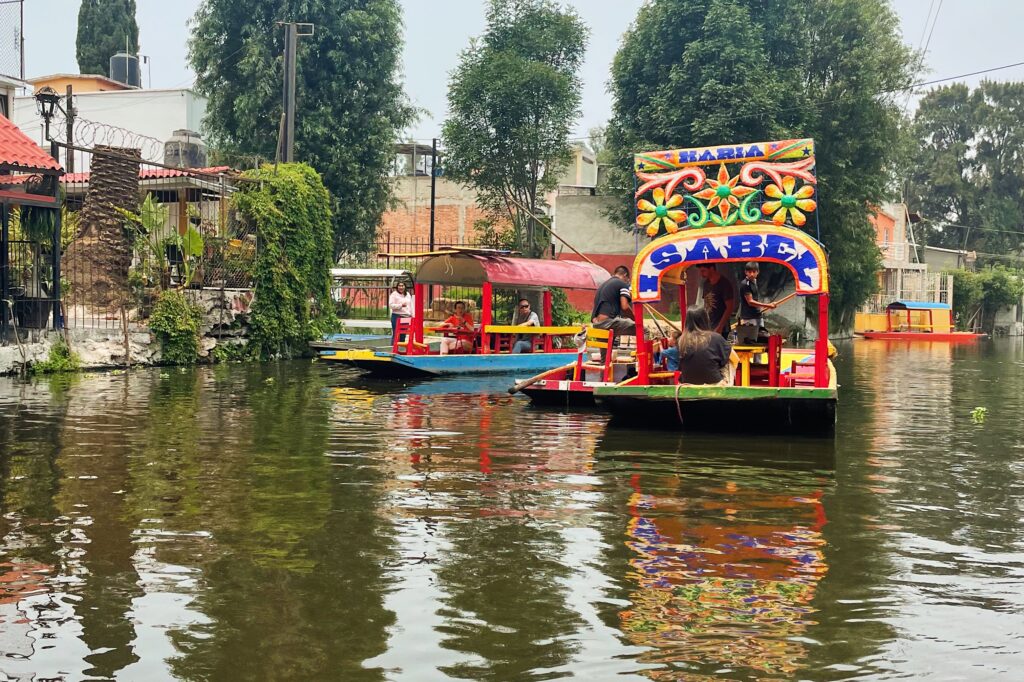
Float on the Famous Canals of Xochimilco
Jump on a party boat for the day at Xochimilco, a network of ancient canals in the southern part of the city. Once you’re on the boat, you can rent mariachis and enjoy micheladas. I recommend booking a tour through Airbnb Experiences.
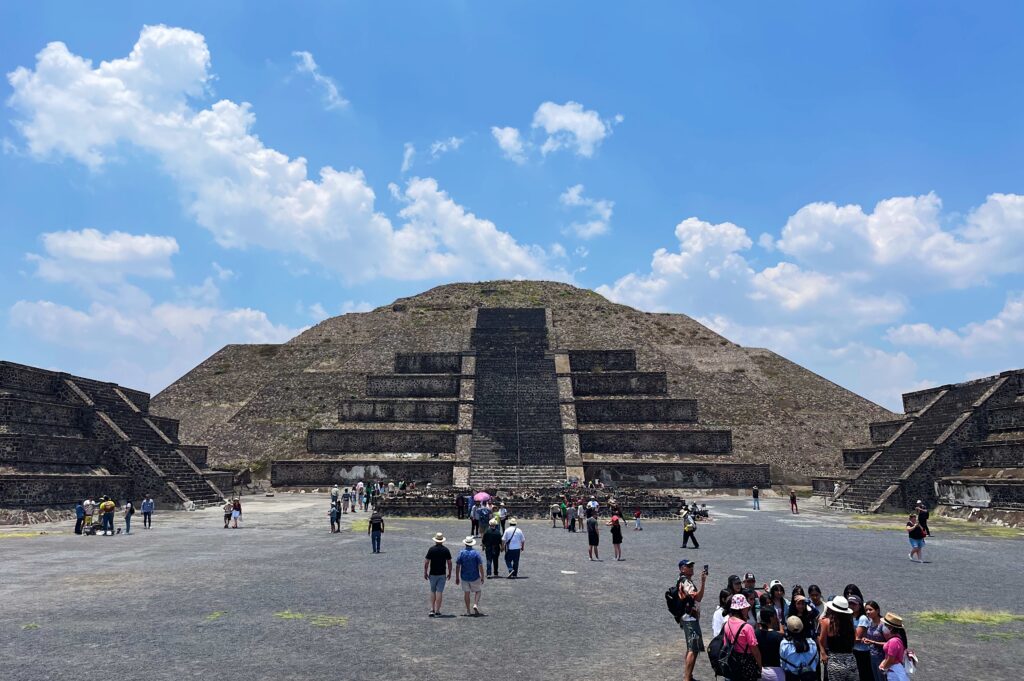
See Ancient Ruins at Templo Mayor and Teotihuacán
Before the Spanish arrived in Mexico, the Aztecs and other pre-Hispanic cultures ruled over the land. In Centro Histórico, you’ll find ruins at Templo Mayor, the site of the former capital of the Aztec empire. It’s worth the day trip to the ancient city of Teotihuacán which is about an hour from Mexico City via Uber. It’s home to impressive pyramids that predate the Aztec empire. (If you go to Teotihuacán, you can skip Templo Mayor!)
Where To Stay
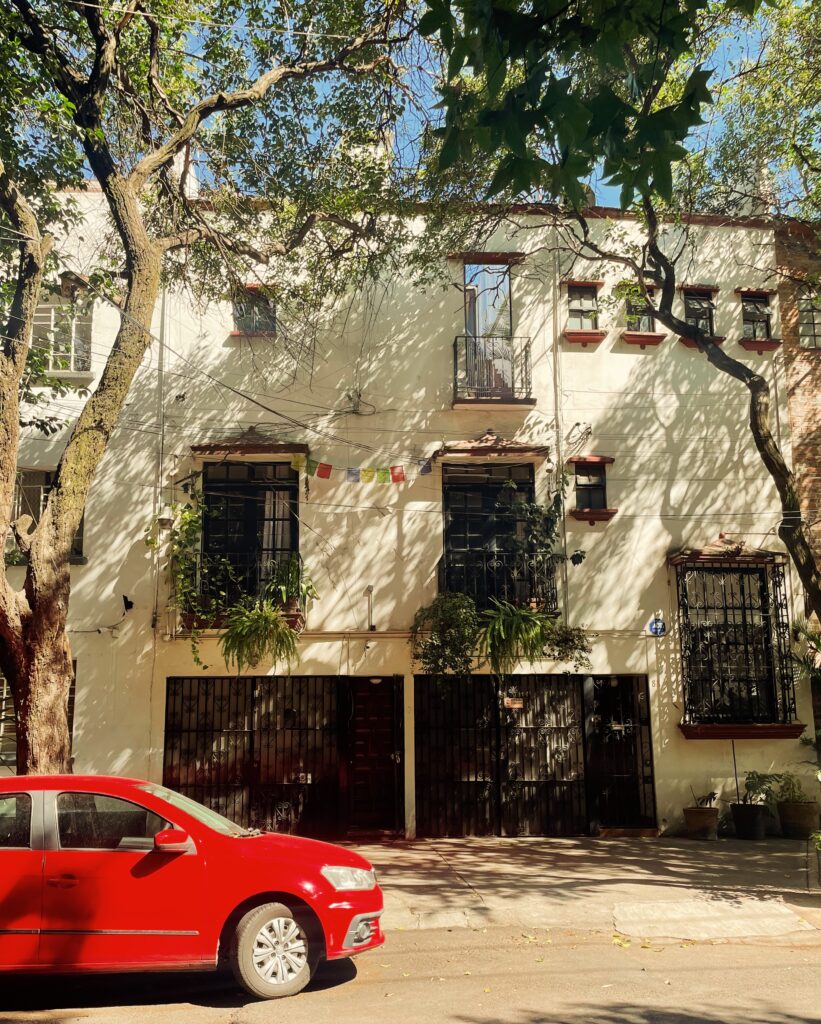
Roma Norte
Roma Norte is currently the place to be in Mexico City. It’s filled with eclectic bars, vintage pop-ups, and TikTok-trending spots. It’s a great place to stay because it’s within walking distance of must-see attractions, delicious restaurants, and other great neighborhoods you’ll want to explore.
If you’re booking an Airbnb double check you’re actually staying in Roma Norte. Some listings will say they’re in Roma to attract more bookings but they’re actually in Doctores which isn’t a safe neighborhood.
Juárez/Reforma
Juárez is closer to action and the city center. It has a lively nightlife, so if you like to go out while on vacation, Juárez is the place to be. In Juárez, you’ll find the Zona Rosa, an LGBTQ+ neighborhood with rainbow crosswalks and plenty of queer-friendly bars.
Near Juárez, you’ll find a lot of commercial hotel chains that will often include ‘Reforma’ in their name. ‘Reforma’ refers to the Paseo de la Reforma, meaning its located close to the main drag. Even though Reforma isn’t a neighborhood per se, it’s a great central place to stay.
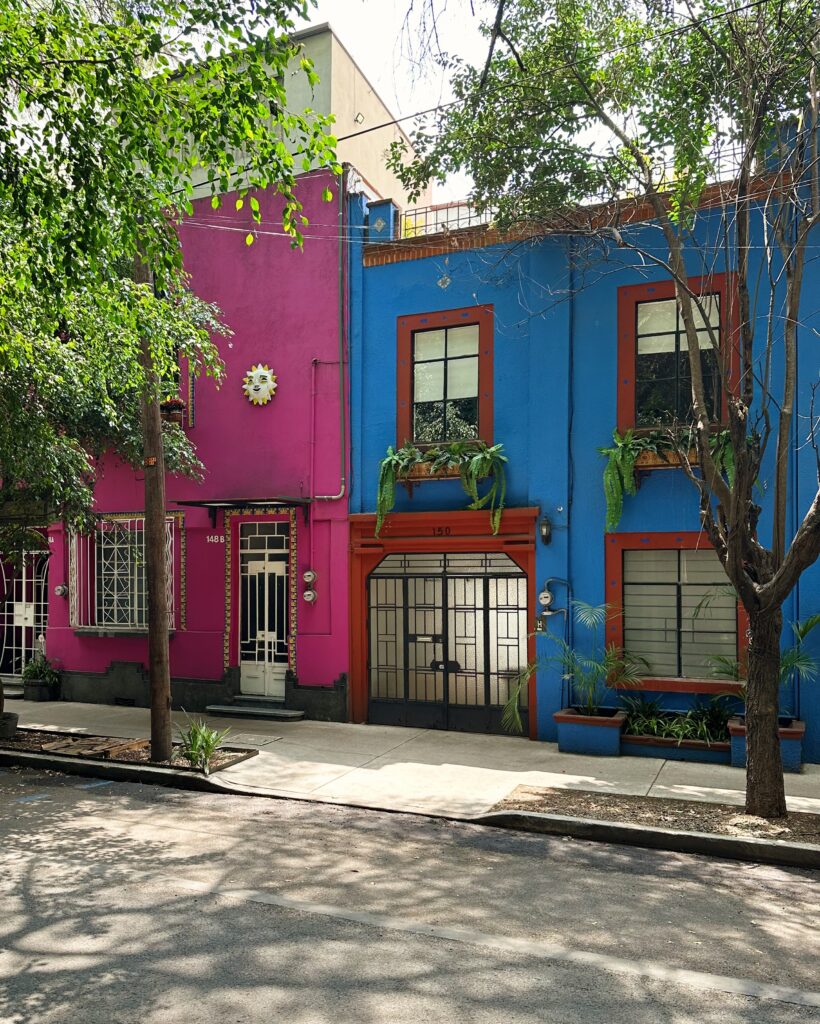
My Recommendation: La Condesa & Hipódromo
La Condesa (or Condesa) is my favorite neighborhood in Mexico City. It has a peaceful, relaxed vibe with lots of greenery. It’s adjacent to Hipódromo which is often mistakenly grouped into La Condesa because of their similar inviting vibes. The area is surrounded by a tree-lined avenue called Avenida Ámsterdam which is dotted with great restaurants and shops.
When looking for a place to stay, I recommend booking a place near Parque España and Parque México which are on the blurry borders of La Condesa and Hipódromo. I stayed at Casa Decu, an affordable boutique hotel near Ávenida Amsterdam that I highly recommend.
Honorable Mentions
Polanco
Polanco is the Beverly Hills of Mexico City. It’s beautiful and exclusive, so it comes with a hefty price tag. It’s a great option to stay in but it’s a bit isolated from other neighborhoods making it challenging to get around on foot.
Centro Histórico
Centro Histórico has plenty of hotels for people who want to stay near old-world charm and stereotypical tourist attractions. Personally, I prefer to stay away from the crowds and this neighborhood can be a bit loud and touristy.
BEST TIME TO VISIT
Mexico City has pretty nice weather all year round. If you want to see the city in bloom, spring (specifically late March to mid-April) is a great time to visit to see the streets covered in purple Jacaranda trees. The summer brings on the rainy season so you can expect it to rain in the afternoons from June to September.
Good to knows
Getting Around
Walking
It is safe to walk around most neighborhoods in Mexico City during the daytime. More touristy neighborhoods like Roma Norte and La Condesa are also safe to walk around at night. Just be cautious that you’re not accidentally wandering into a bordering neighborhood that isn’t as welcoming to tourists. If you’re in a more residential or non-touristy part of the city, you might want to opt for an Uber.
Uber
Uber is the best way to get around Mexico City. The rates are affordable for foreigners and it’s safer than taking a cab. I do not recommend taking a taxi unless it is called by the front desk at a hotel. They’ve been known to price gouge tourists and your location is not tracked like in an Uber.
Biking
You can rent a bike around various parts of the city by downloading the Ecobici app. Make sure to register on the app before you head out because it takes a minute to set up. On the first three Sundays of every month, the city closes down the Paseo de la Reforma to cars from 8 a.m. to 2 p.m. for bikers and pedestrians to explore the city streets freely.
Metro/Bus
Mexico City has a great public transit system. Tickets for both the metro and the bus cost 6 pesos each way, which is about 25 cents in U.S. currency. You can purchase a refillable card for 15 pesos, which is recommended because paper tickets are hard to come by. Google Maps provides great directions to help you navigate around the city.
Currency
The official currency of Mexico is the Mexican peso. It’s important to keep pesos on you for street food and pop-up markets. It can be hard to track down pesos in the United States so try ordering pesos from your bank ahead of time or go to a currency exchange before you leave. It’ll be more expensive in Mexico.
When I visited, I kept the Google currency conversation calculator handy on my phone, so I could double-check prices at markets and restaurants.
Language
Spanish is the most widely spoken language in Mexico. Many museums and cultural sites will include an English translation for exhibit descriptions. Also, many restaurants in tourist areas provide English menus upon request.
Packing
In general, locals dress pretty conservatively and casually in Mexico City. People wear jeans and a T-shirt all year round. If you don’t want to stick out as a tourist, don’t wear anything too colorful or too revealing. For safety, leave your fancy jewelry and designer bags at home so you don’t draw unwanted attention to yourself.
Safety
Speaking of safety…overall, I felt safe in Mexico City. Like any major city, you need to be smart and cautious at night or in crowded places. Be smart and you’ll have a safe and stress-free time.
Stay tuned for more recommendations and itineraries for Mexico City.
Reply